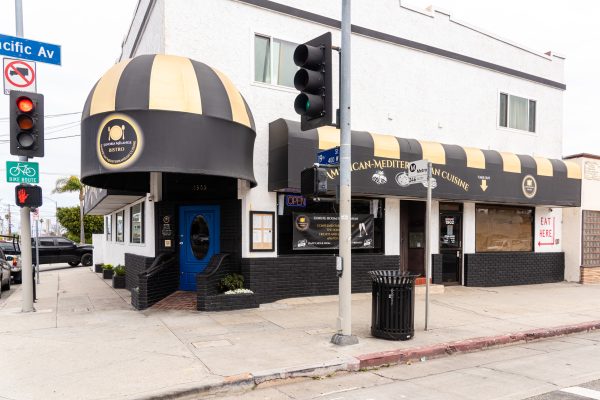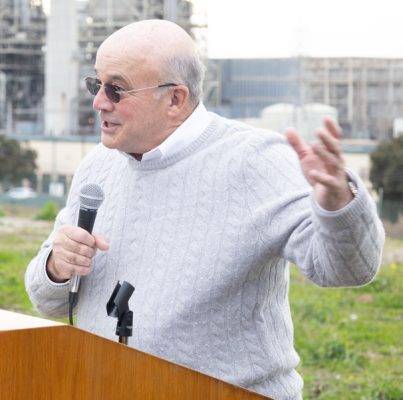
Last year, Jim Hannon was laid up with a broken hip following a bike accident.
He’s no spring chicken — his hair color steered toward the “salt” in salt and pepper long ago — but his doctors credited his years of riding bicycles for his good health and quick recovery.
“After they got in there, they said that I had the hip of a 20-year-old,” Hannon said, laughing.
Hannon is the president of the Beach Cities Cycling Club, a board member of the South Bay Bicycle Coalition and a member of the Blue Zones Project Livability Committee. He’s also a USA Cycling coach, and you’re just as likely to see him in lycra and a bike helmet as you would see him spreading the good, two-wheeled word in city council chambers throughout the South Bay.
Since his retirement from 45 years in the aerospace industry, Hannon has spent much of his time promoting cycling. He’s done so through philanthropic efforts, as with the Best Buddies Kick-Off ride; and through political efforts, as with the SBBC’s South Bay Bicycle Master Plan.
“Part of what I do is to run a committee with interested parties, searching out ways to make the community more walk- and bike-friendly,” Hannon said. “If we can get more people out of cars and onto bikes and walking, this would certainly be a better climate.”
It starts with the first tenet of the Blue Zones “Power Nine” — a series of common denominators among the world’s longest-living communities: Moving naturally. But it doesn’t stop there.
“Biking, skating, anything physical…but we’re looking at multi-modal options as well, really taking advantage of Metro, bus lines, and other ways to get people to their destinations when they need something,” Hannon said.
At issue, however, is Metro’s fluctuating popularity and ridership; studies published by LA Metro show that ridership has continually dropped since mid-2014.
“It’s interesting how popular metro is in a lot of big cities, and how unpopular it is in our own community,” Hannon said. “We have very few people taking advantage of it, and when you ask them why, they say it’s inconvenient, that it doesn’t take them where they want to go or when they need to be there.”
The key, he believes, is making natural movement an easier option than it is to hop into a car and drive to your destination.
“The car has been king for too long,” he said. “They’re lethal weapons, killing people and polluting our planet. I know it’s the choice we’ve made to get to today, but we need to make better choices in the future.”
For him, it starts with rider safety. The first thing cities can do, Hannon said, is to create bike lanes. “It’s just paint, right? But it’s a profound impact — people feel safer,” he said.
That, Hannon says, is psychological. Vehicle drivers learn from the beginning that it’s “proper and appropriate” to stay between lines — that it keeps a driver safe. So too for cyclists, he says. He considers a lack of bike lanes in Palos Verdes Estates a major factor in the death of retired state judge Peter Krichman, who was killed following a collision in mid-March. Krichman was biking in the 100 block of Palos Verdes Drive West when the incident occurred.
Hannon’s concern comes from pushback, and slow adoption, from cities. The South Bay Bicycle Master Plan, introduced in 2011, was quickly adopted by seven municipalities around the South Bay, with only one dissenting vote coming from a councilman in El Segundo. The Master Plan is the first multi-jurisdictional cycling master plan in the country, proposing more than 200 new miles of bike-friendly tracks, lanes and roads.
Some communities have embraced the concept with open arms; Redondo Beach’s cycling track along Harbor Drive, completed last year, and new bicycle-friendly “sharrow” lanes on Monterey Boulevard in Hermosa Beach are solid examples.
“But it’s been a disappointingly slow start, in some respects,” Hannon said, in particular recalling a meeting regarding sharrows on Manhattan Beach’s Pacific Avenue in 2013.
“There were motorists mad that it would slow them down,” he recalled. “One guy was bragging that he could get his car up to 50 miles an hour between stop signs.” Parents in the area said that they can’t imagine letting children walk along that street during rush hour, much less bike down it. The Manhattan Beach City Council defeated the plan that night.
Hannon notes that the tide might soon be shifting in Manhattan Beach, as the newly-considered downtown redesign appears to include ample space for cyclists.
“We’re not trying to take anything away from anyone — we’re just trying to play it safe and respectful,” he said. “Bicycles create a better environment, a safer environment, and people are just going to be healthier.”









